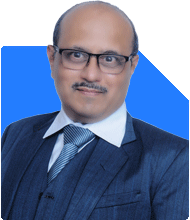How can I grow my SIP of 30,000 to 1 crore in 3 years without adding more funds?
Ramalingam Kalirajan |10872 Answers |Ask -Follow
Mutual Funds, Financial Planning Expert - Answered on Nov 25, 2024
He has an MBA in finance from the University of Madras and is a certified financial planner.
He is the director and chief financial planner at Holistic Investment, a Chennai-based firm that offers financial planning and wealth management advice.... more

From last 3 months I stared my sip of 30 thousand let me know in short sentences how can I achieve 1 crore within 3 years without raising my fund also i can see from last 3 months funds are getting decreasing
Understanding Your Current Investment Scenario
Rs 30,000 SIP over three years amounts to Rs 10.8 lakh in total investment.
Achieving Rs 1 crore means targeting a significantly high annual growth rate.
Market fluctuations may cause short-term losses, as seen in your current funds.
Reasons for Fund Decrease in the Short Term
Equity markets can be volatile in the short term.
Returns from SIPs tend to stabilise over a longer period.
Temporary dips are common and not a cause for immediate concern.
Steps to Stay on Track Towards Rs 1 Crore
1. Focus on High-Growth Asset Classes
Allocate a higher percentage to equity-oriented funds.
Avoid debt funds, as they may not meet the aggressive growth needed.
2. Stick to Actively Managed Funds
Actively managed funds have a better chance of outperforming benchmarks.
Fund managers can navigate market volatility better than passive index funds.
3. Leverage Diversified Funds
Include large-cap, mid-cap, and small-cap exposure.
Diversification reduces risk and improves the potential for high returns.
4. Maintain Consistency with SIPs
Continue your SIP without interruption, even during market downturns.
Consistency benefits from rupee cost averaging.
5. Plan Portfolio Rebalancing
Review your portfolio every six months with a Certified Financial Planner.
Shift investments to less volatile funds as you approach your goal.
6. Avoid Emotional Decisions
Do not withdraw or stop SIPs during market corrections.
Focus on long-term goals, not short-term performance.
Disadvantages of Direct Funds
Direct funds lack professional guidance on market trends.
Selecting and managing funds independently can lead to errors.
Opt for regular funds through a Certified Financial Planner for tailored advice.
Importance of Reviewing Tax Implications
Equity mutual fund LTCG above Rs 1.25 lakh is taxed at 12.5%.
Short-term gains (STCG) are taxed at 20%.
Plan redemptions carefully to reduce tax liability while meeting your goal.
Alternatives to Boost Returns
1. Consider Lump Sum Investments
If you receive bonuses or savings, invest them as a lump sum.
This can complement your ongoing SIPs and increase your corpus.
2. Explore Balanced Advantage Funds
Balanced advantage funds dynamically manage equity and debt.
These funds balance growth potential with volatility management.
3. Monitor Market Cycles
Invest additional funds during market corrections for higher growth.
Use such opportunities to optimise your portfolio’s returns.
Final Insights
Reaching Rs 1 crore with Rs 30,000 SIP in three years is ambitious. It requires market support, disciplined investing, and an equity-heavy portfolio. Focus on staying consistent and seeking professional advice for periodic reviews and adjustments. Avoid panic due to short-term market fluctuations, as equity markets require patience to deliver results.
Best Regards,
K. Ramalingam, MBA, CFP,
Chief Financial Planner,
www.holisticinvestment.in
https://www.youtube.com/@HolisticInvestment
You may like to see similar questions and answers below
Ramalingam Kalirajan |10872 Answers |Ask -Follow
Mutual Funds, Financial Planning Expert - Answered on Apr 20, 2024
Ramalingam Kalirajan |10872 Answers |Ask -Follow
Mutual Funds, Financial Planning Expert - Answered on Jul 18, 2024
Ramalingam Kalirajan |10872 Answers |Ask -Follow
Mutual Funds, Financial Planning Expert - Answered on Sep 27, 2024
Nitin Narkhede | Answer |Ask -Follow
MF, PF Expert - Answered on Jan 23, 2025
Milind Vadjikar | Answer |Ask -Follow
Insurance, Stocks, MF, PF Expert - Answered on Jan 23, 2025
Radheshyam Zanwar |6735 Answers |Ask -Follow
MHT-CET, IIT-JEE, NEET-UG Expert - Answered on Dec 06, 2025
Dr Nagarajan J S K |2576 Answers |Ask -Follow
NEET, Medical, Pharmacy Careers - Answered on Dec 06, 2025
Mihir Tanna |1090 Answers |Ask -Follow
Tax Expert - Answered on Dec 06, 2025
Ramalingam Kalirajan |10872 Answers |Ask -Follow
Mutual Funds, Financial Planning Expert - Answered on Dec 06, 2025
Radheshyam Zanwar |6735 Answers |Ask -Follow
MHT-CET, IIT-JEE, NEET-UG Expert - Answered on Dec 06, 2025
Radheshyam Zanwar |6735 Answers |Ask -Follow
MHT-CET, IIT-JEE, NEET-UG Expert - Answered on Dec 06, 2025
Radheshyam Zanwar |6735 Answers |Ask -Follow
MHT-CET, IIT-JEE, NEET-UG Expert - Answered on Dec 06, 2025
Dr Dipankar Dutta |1837 Answers |Ask -Follow
Tech Careers and Skill Development Expert - Answered on Dec 05, 2025
Dr Shyam Jamalabad |108 Answers |Ask -Follow
Dentist - Answered on Dec 05, 2025
Dr Shyam Jamalabad |108 Answers |Ask -Follow
Dentist - Answered on Dec 05, 2025


























